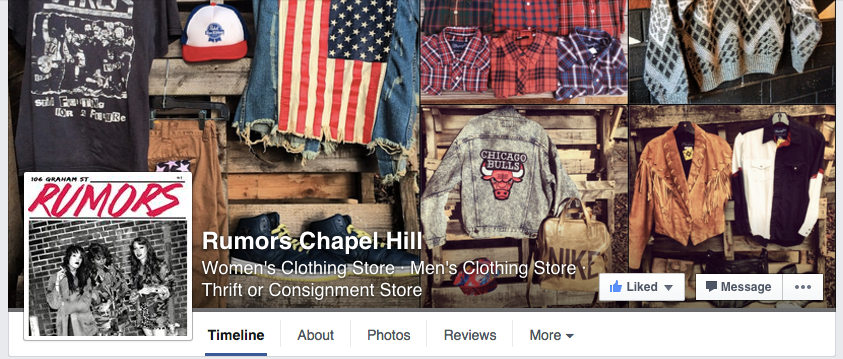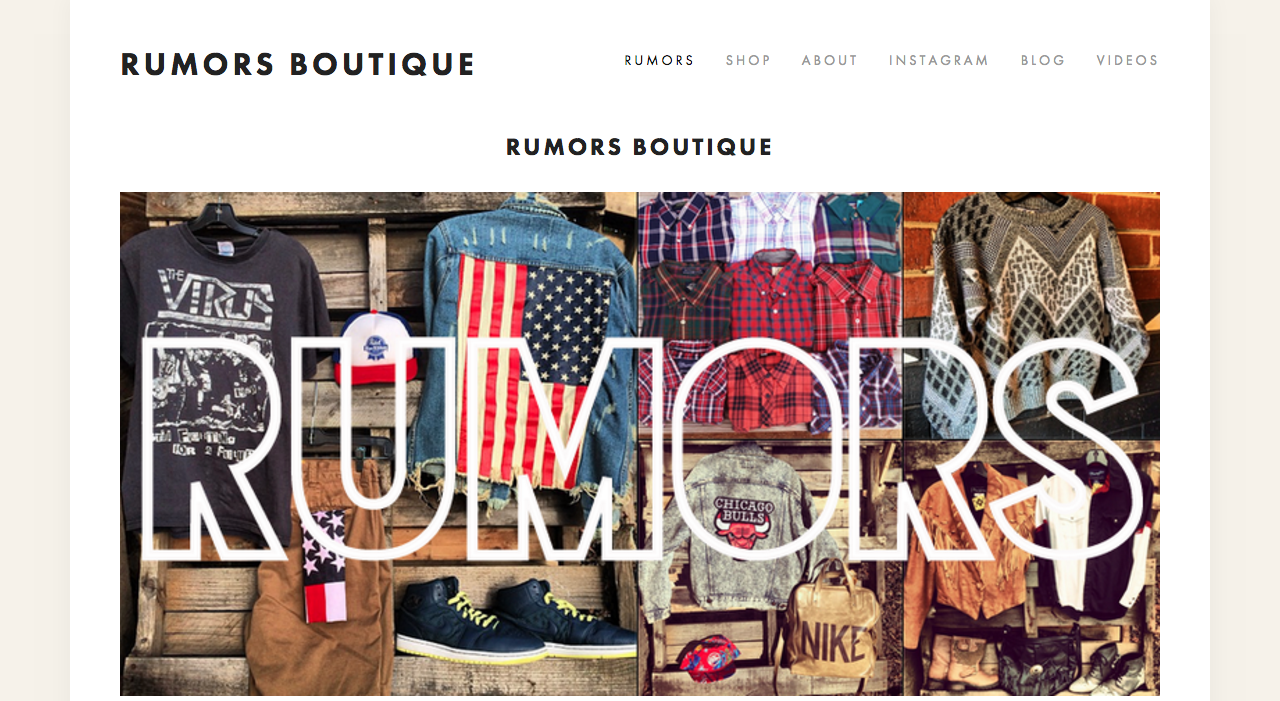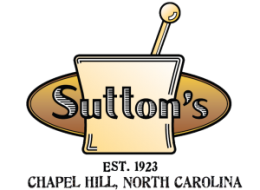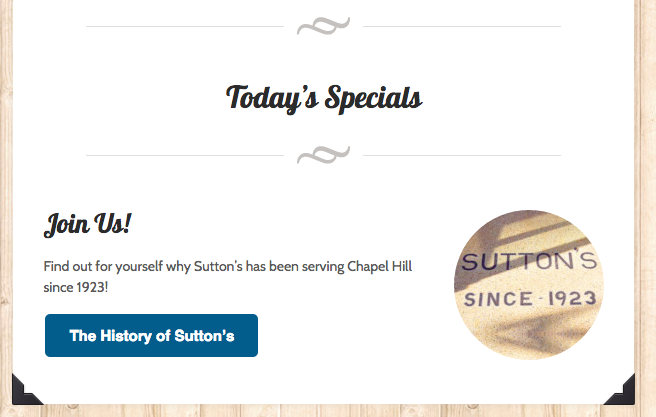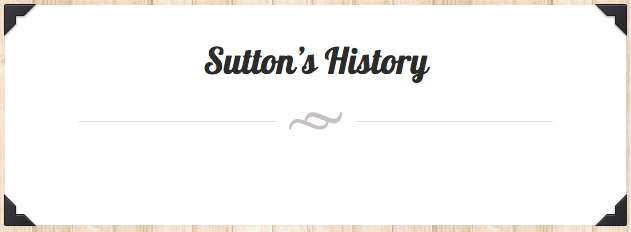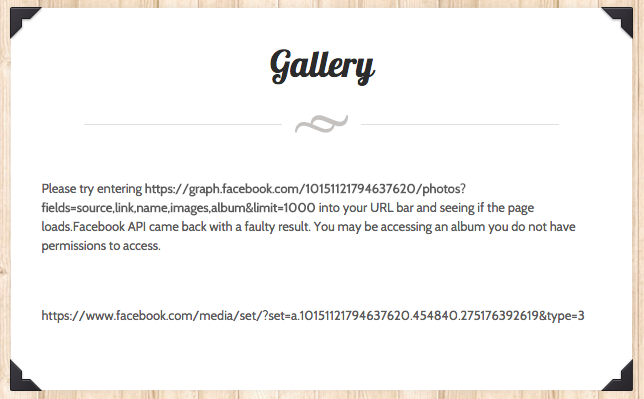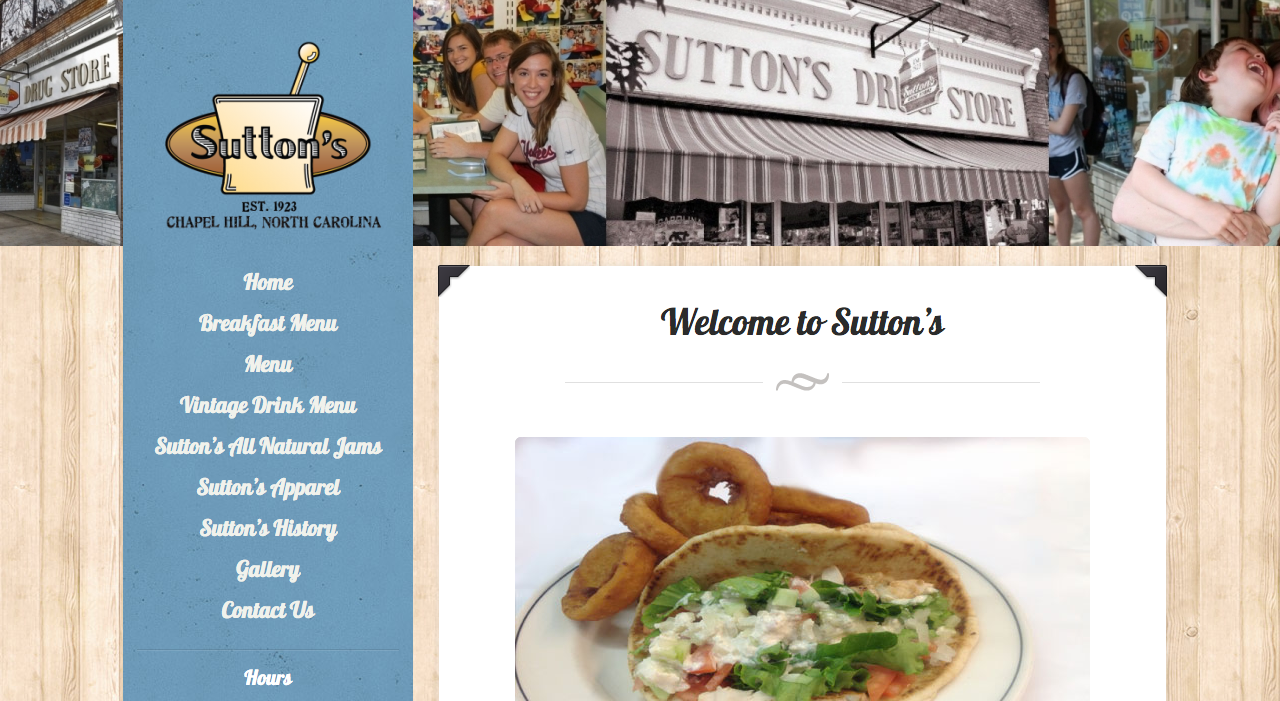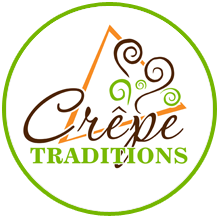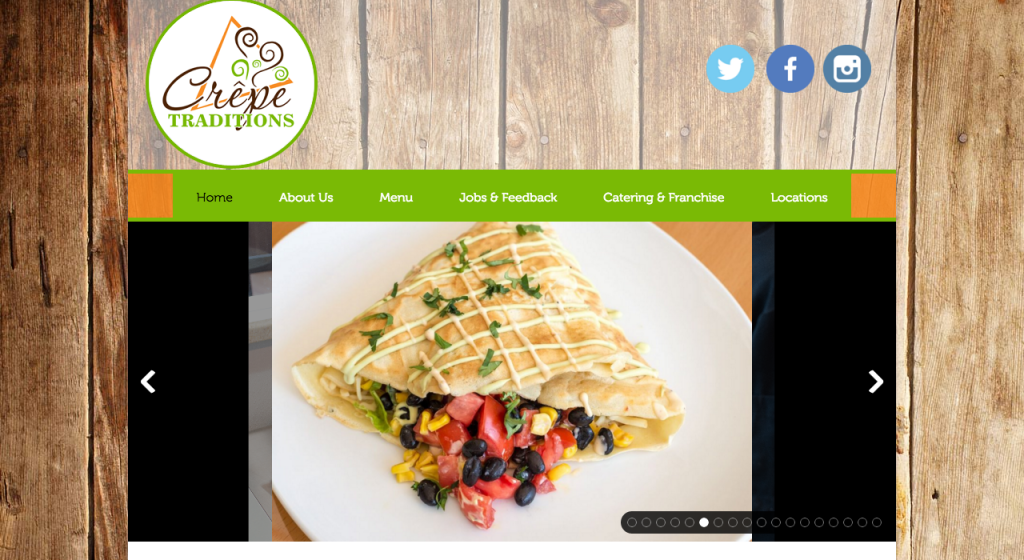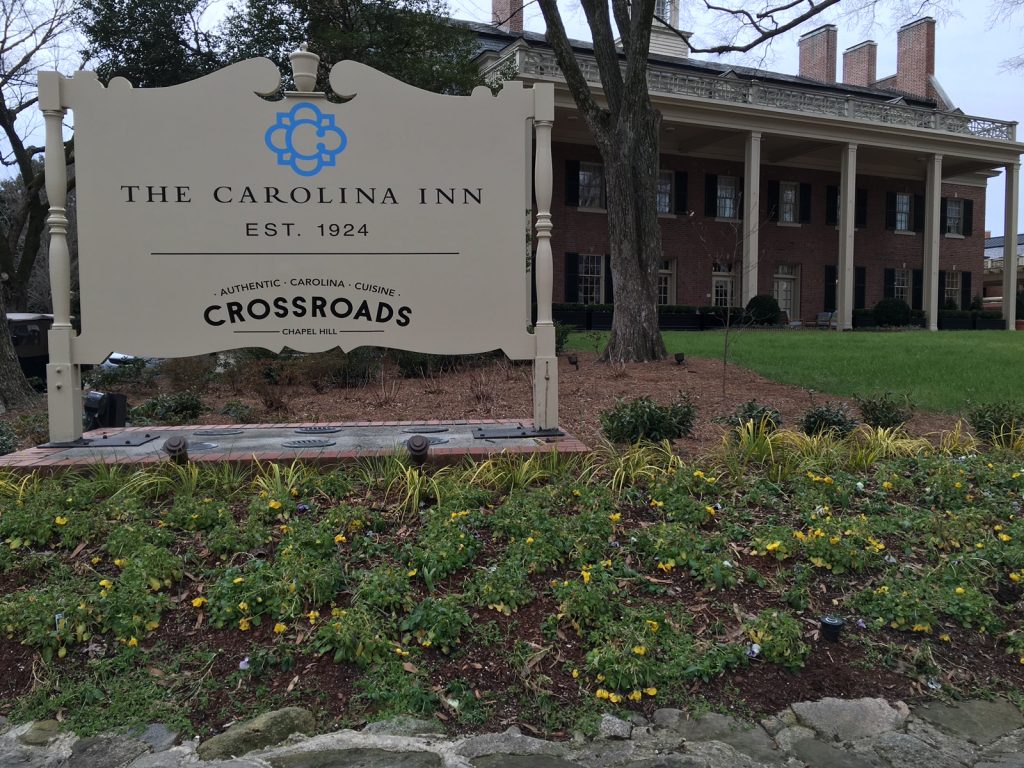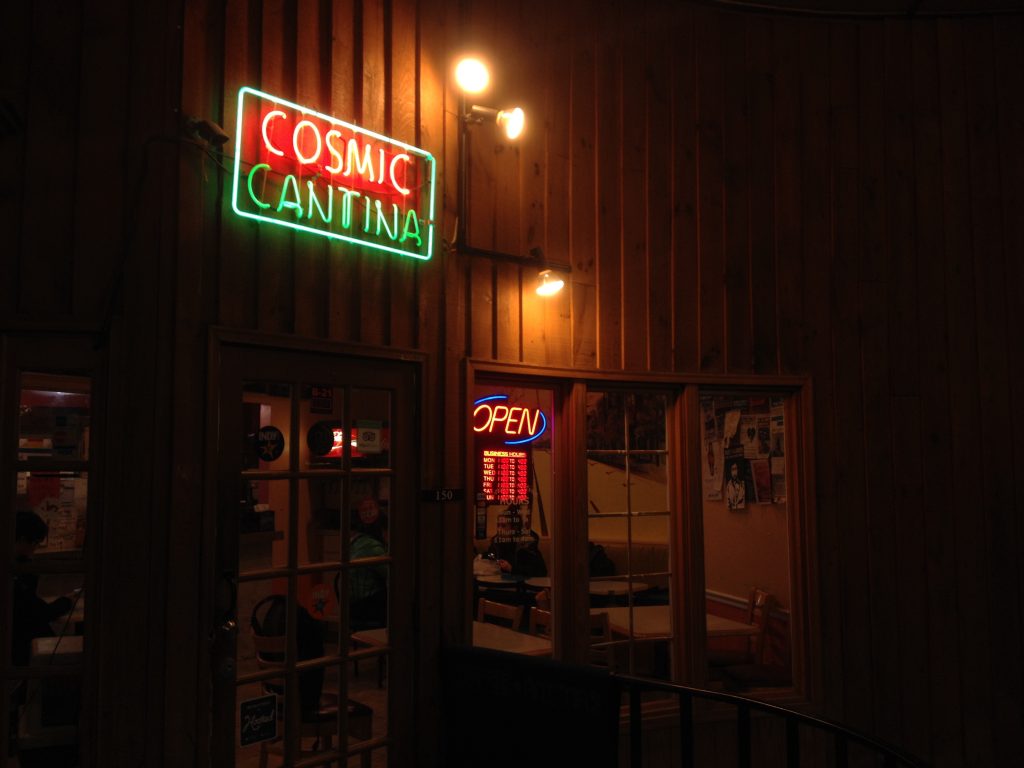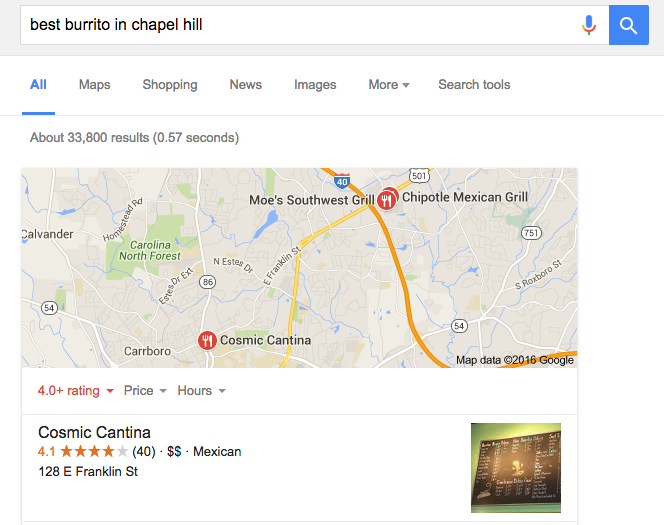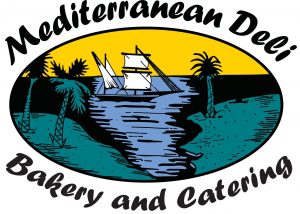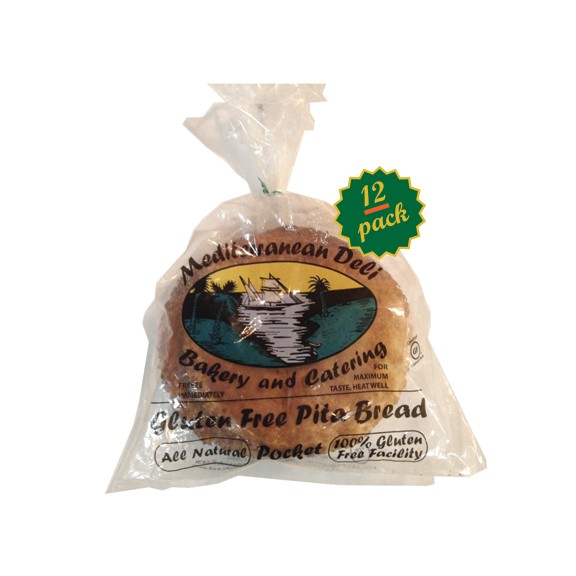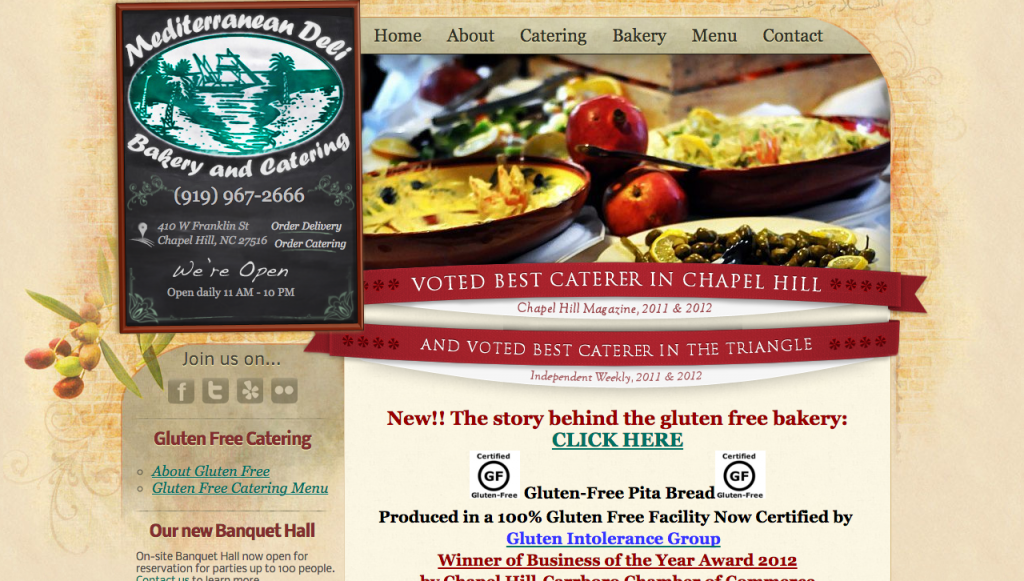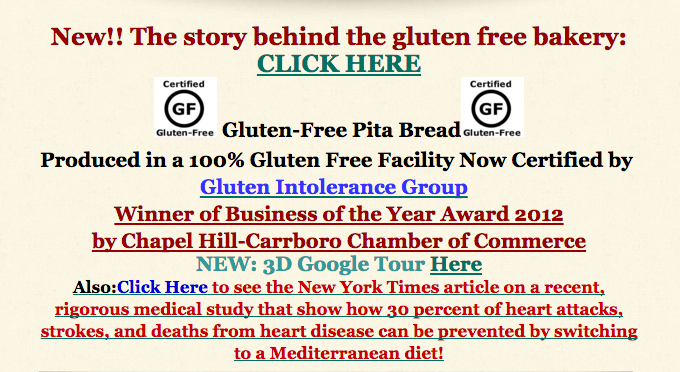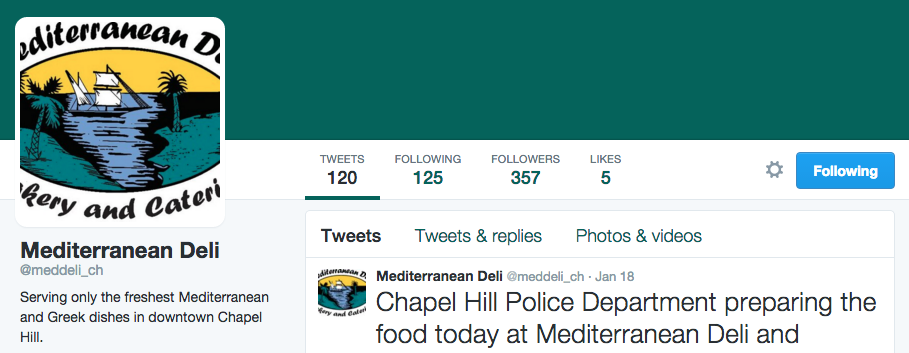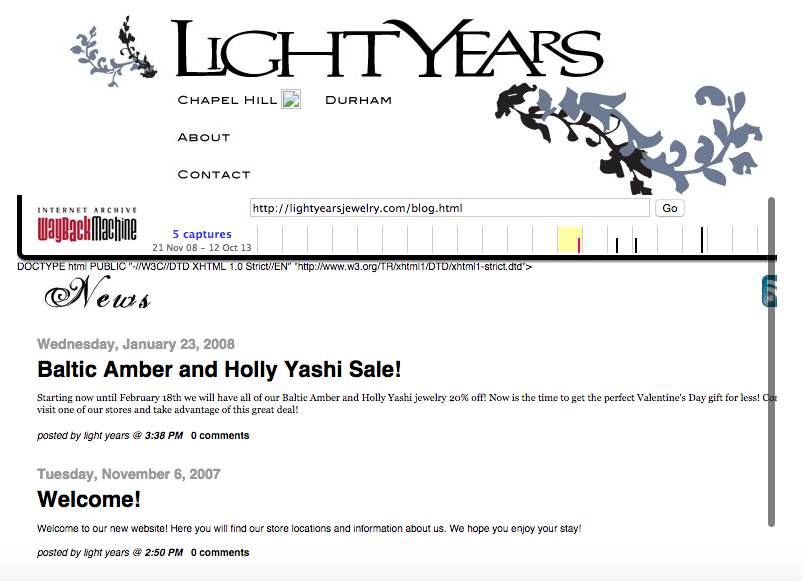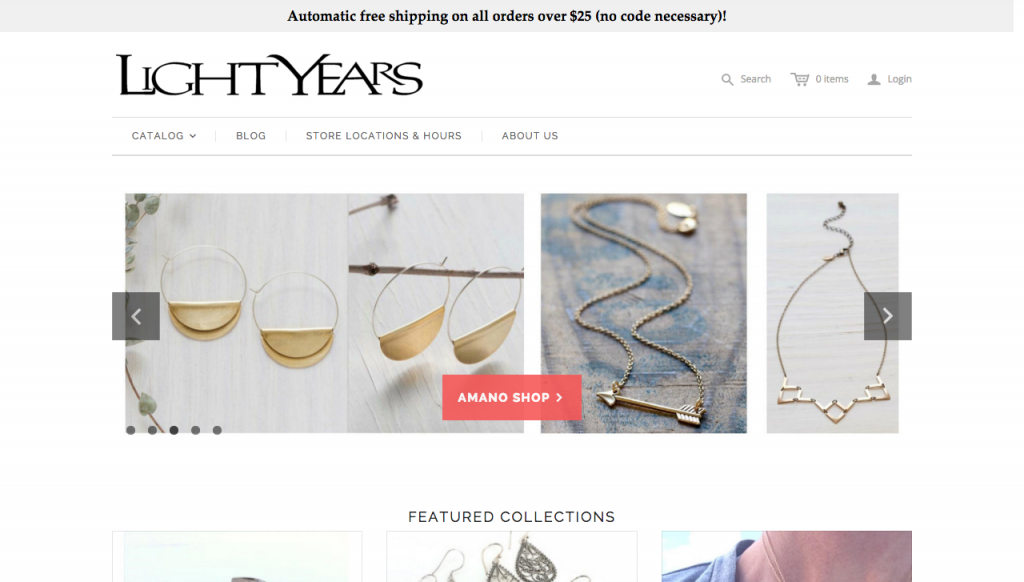I once heard a rumor that Artisan Pizza Kitchen – previously known as Artichoke Basil – changed its name because it hijacked its brand and menu from a store in New York, and that store threatened to sue. I found some evidence to substantiate this claim here, but Artisan also mentioned on Facebook in 2011 that it rebranded due to a trademark issue with another restaurant.
LOGO 2011 – 2015
Artisan’s logo looked somewhat similar to its old one in the immediate years following the name change. Overlooking the Comic Sans typeface (because we should all already know that’s a no-no), other issues with the old logo present themselves.
The font size of “Artisan” appears to be larger than that of “Pizza” and “Kitchen.” The tight spacing around the curved text clashes with the ample amount of space within the circle. The text “Chapel Hill, NC” is unreadable against the dark red background, and “Since 2008” is much too small to read. The basil plant graphic doesn’t relate to the restaurant’s new name and looks out of place.
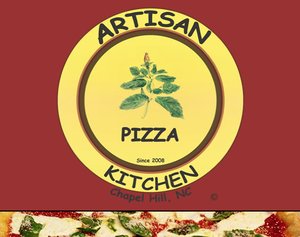
Fortunately, the faults of the old logo are now irrelevant, as Artisan has rebranded again. The shop came under new ownership in the summer of 2015, and with new owners came another new logo.
LOGO 2015 –
Artisan’s new logo embodies minimalism and sophistication. Its black and light cream color scheme is simple and clean, the serif font choice promotes professionalism, and the thin white double border adds a subtle touch of style.
A few quirks in the design prevent the logo from being too simple. The unique hexagonal shape gives an otherwise simple design more personality. The serifs or feet of the “p” and “k” align with the angles of the the hexagon. The foot of the “a” also appears to extend further than one would expect.
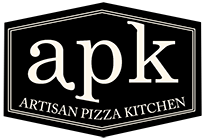
One flaw that caught my eye is the discrepancy in spacing. Between the top of the “k” and the border is very tight, but spacing is roomier between the bottom of the “p” and the smaller lettering that spells out the pizzeria’s full name. This inconsistency is subtle, but the devil is in the details.
Overall, Artisan’s new logo is professional and fresh. I don’t refer to the restaurant as “APK,” but perhaps the acronym will catch on in good time.
BUILDING SIGNAGE
Outside the building, Artisan updated its windows to reflect the logo change. On either side of the entrance appear two white prints of the logo, which promote recognition of the pizzeria’s latest rebranding. The awning remains the same, connecting the past with present.
WEB DESIGN
Artisan’s website showcases the restaurant’s logo upgrade by displaying the graphic prominently in the top left. The logo’s black background contrasts with the red background of the site’s header and footer. The combination of a slab serif (think typewriter) and a brush script follows a basic rule for pairing fonts by creating contrast. However, the slab serif feels a bit oversized in some areas on the site and may clash somewhat with the chic style of the serif used in the logo.
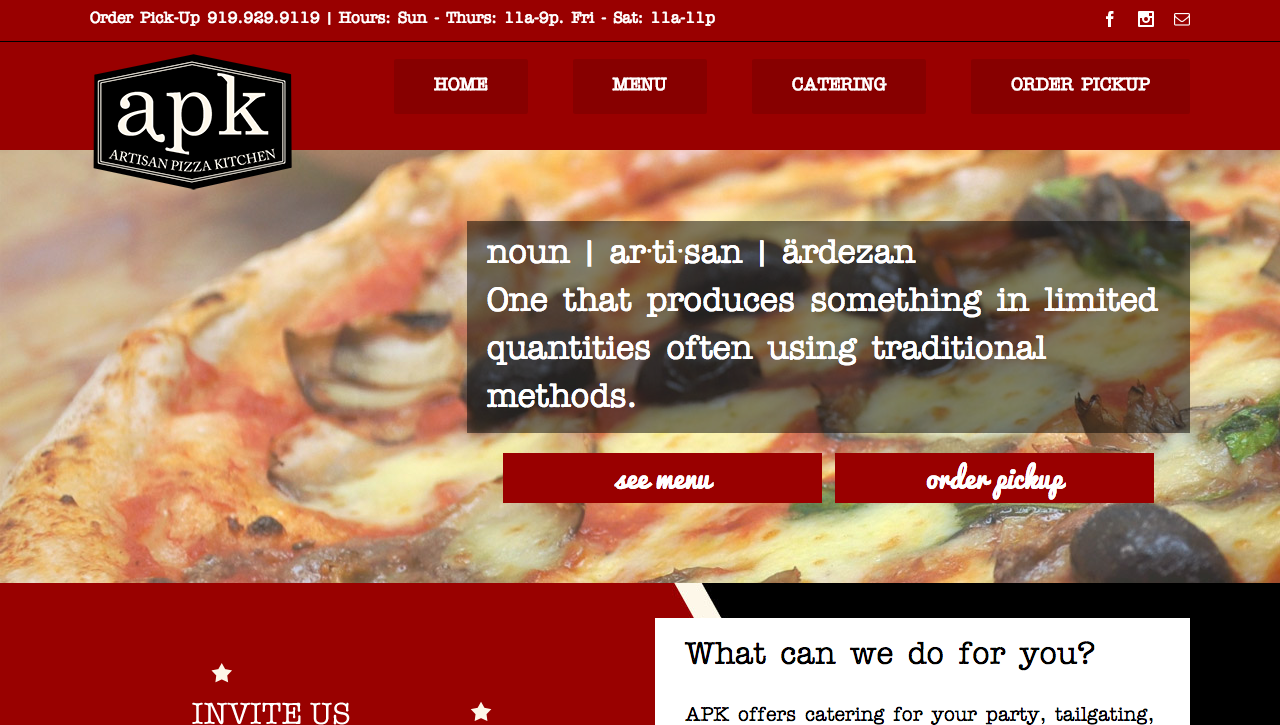
The website is cognizant of varying browser sizes and makes subtle but important changes to increase readability at narrower widths. For example, on wider screens, visitors will see a faded pattern of illustrations of pizza slices, cheese blocks and toppings, as pictured below.

The pattern effectively embellishes an otherwise bland white background. But if a visitor is viewing on a smaller screen, the pattern could become distracting. Thus, the pattern disappears, presumably to increase readability and promote faster load times.
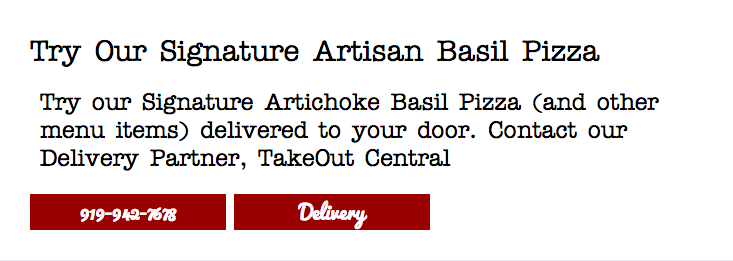
SOCIAL MEDIA
Facebook – 519 likes
Twitter – 42 followers
Instagram – 57 followers
Since the ownership change, Artisan has upped its activity on Facebook and Instagram, but its Twitter account appears to remain dormant. As I have mentioned in previous blog posts, Facebook and Instagram appear to be most advantageous for reaching students in Chapel Hill, so I’m neither surprised by nor worried about inactivity on Twitter.
Posting consistently to social media is a great start for Artisan. To continue building a following, it should begin engaging its followers more directly, perhaps through a social media contest or other method of stimulating interaction.
THE BOTTOM LINE
Artisan’s latest rebranding efforts have resulted in a modern and professional visual identity that catches the eye of passersby on Franklin Street. Its activity on social media has spiked since new owners took the reigns, but it has not accumulated a large amount of followers. With time and more engagement on social media, I suspect students will take note of Artisan’s new brand and perhaps even begin calling the pizzeria “APK.” Will you?

